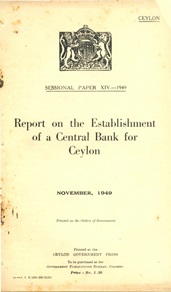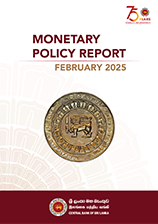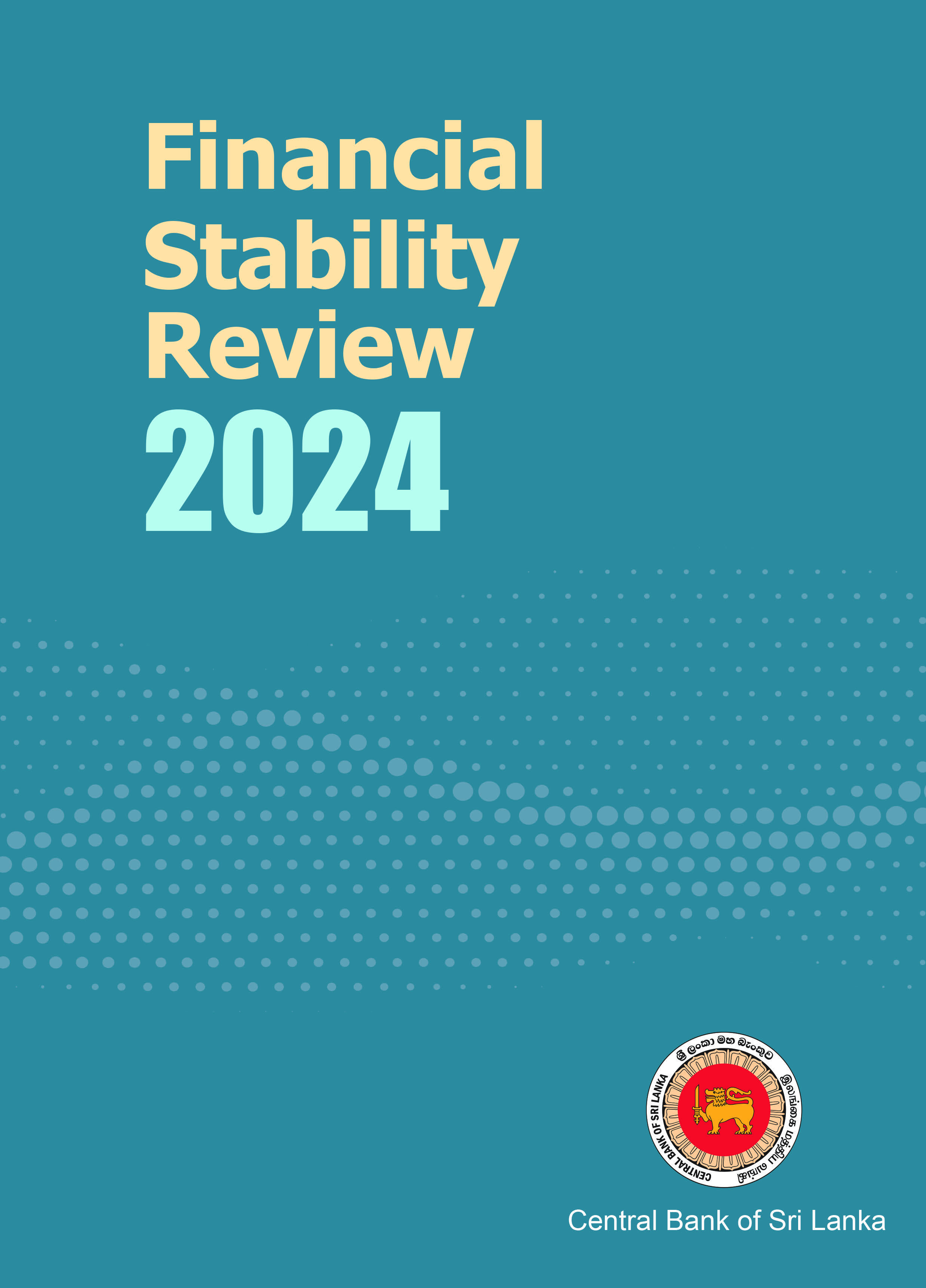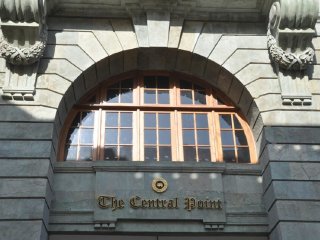The Central Bank of Sri Lanka has named the year 2020 as the year of digital transactions in Sri Lanka. The main objective of this initiative is to popularize digital payment schemes already introduced to the country by the license commercial banks, other financial institutions and LankaClear (Pvt) Ltd. Awareness is the key to increased use of mobile payment applications. The Central Bank believes that this initiative would help take the country forward in terms of technology and therefore, the Payment & Settlement Department (PSD) of the Central Bank of Sri Lanka has taken several steps to raise public awareness on digital payment modes.
-
The Central Bank Holds Payment App Awareness and Onboarding Session
-
Credit Support to Accelerate Economic Growth
Licensed commercial banks and licensed specialised banks (hereinafter referred to as licensed banks) have agreed to provide a special Credit Support Scheme to eligible Small and Medium Enterprise borrowers of respective licensed banks, with a view to complementing the fiscal incentives already announced by the Government of Sri Lanka (GoSL).
Accordingly, the Central Bank of Sri Lanka (CBSL) issued a Circular providing guidelines for implementing the Scheme in a consistent manner across all licensed banks. The Circular issued to banks can be accessed from the links below and the salient features of the Scheme are as follows:
-
IMF Staff Concludes Visit to Sri Lanka
A staff team from the International Monetary Fund (IMF) led by Manuela Goretti visited Colombo during January 29 – February 7, 2020 to meet with the new administration and discuss its policy agenda. At the conclusion of the staff visit, Ms. Goretti issued the following statement:
“The IMF staff team had constructive discussions with the Sri Lankan authorities on recent economic developments and the country’s economic reform agenda. Given the high level of public debt and refinancing needs in the country, ensuring macroeconomic stability calls for fiscal consolidation, prudent monetary policy, and sustained efforts to build international reserves. Ambitious structural and institutional reforms remain critical to raise the country’s growth potential and promote inclusiveness.
-
CCPI based Inflation increased in January 2020
Headline inflation as measured by the year-on-year (Y-o-Y) change in the Colombo Consumer Price Index (CCPI, 2013=100) increased to 5.7 per cent in January 2020 from 4.8 per cent in December 2019. This was driven by monthly increase of prices of items in both Food and Non-food categories. Food inflation (Y-o-Y) increased substantially to a 25-month high of 12.4 per cent in January 2020 from 6.3 per cent in December 2019, while Non-food inflation (Y-o-Y) stood at 2.9 per cent.
The change in the CCPI measured on an annual average basis increased marginally to 4.5 per cent in January 2020 from 4.3 per cent in December 2019.
Monthly change of CCPI recorded at 1.7 per cent in January 2020 and it was due to the price increases observed in the items of both Food and Non-food categories.
-
The Central Bank of Sri Lanka Reduces its Policy Interest Rates
The Monetary Board of the Central Bank of Sri Lanka, at its meeting held on 29 January 2020, decided to reduce the Standing Deposit Facility Rate (SDFR) and the Standing Lending Facility Rate (SLFR) of the Central Bank by 50 basis points to 6.50 per cent and 7.50 per cent, respectively. The Board arrived at this decision following a careful analysis of current and expected developments in the domestic economy and the financial market as well as the global economy. This decision supports a continued reduction in market lending rates, thereby facilitating the envisaged recovery in economic activity given the favourable medium term outlook for inflation, which is well anchored within the 4-6 per cent range.
-
Inflation increased in December 2019
Headline inflation as measured by the year-on-year (Y-o-Y) change in the National Consumer Price Index (NCPI, 2013=100) increased to 6.2 per cent in December 2019 from 4.1 per cent in November 2019. This was driven by monthly increase of prices of items in the Food category along with the statistical effect of the low base prevailed in December 2018. Food inflation (Y-o-Y) increased substantially to 8.6 per cent in December 2019 from 4.0 per cent in November 2019, while Non-food inflation (Y-o-Y) remained unchanged at 4.2 per cent.
-
Forensic Audits
The Central Bank of Sri Lanka (CBSL) notes several instances of misreporting in the media with respect to the forensic audits carried out and wishes to make the following clarifications:-
-
External Sector Performance - November 2019
The trade deficit contracted marginally in November 2019 (year-on-year), with both imports and exports declining. During the first eleven months of 2019, the trade deficit contracted compared to the corresponding period in 2018, as a result of the significant decline in expenditure on imports along with a marginal increase in earnings from exports. Although tourist arrivals decreased on a year-on-year basis in November 2019, a continued recovery is seen in the tourism industry. Workers’ remittances declined (year-on-year) in November 2019 and have recorded a cumulative decline during the first eleven months of 2019. Meanwhile, the financial account of the balance of payments was augmented with the proceeds of the seventh tranche of the International Monetary Fund’s Extended Fund Facility (IMF EFF) programme and net foreign inflows to the Government securities market.
-
Sri Lanka Purchasing Managers’ Index - December 2019
Manufacturing PMI expanded at a slower pace in December 2019 recording an index value of 54.3 mainly due to the slower expansion in New Orders, Production and Stock of Purchases.
All the sub-indices indicated an expansion, yet at a slower pace, compared to November 2019. New Orders and Production expanded at a slower rate owing to the slowdown in manufacturing of textile and wearing apparel sector. A significant slowdown in employment was experienced, particularly in manufacturing of wearing apparel sector as potential employees were attracted to seasonal jobs for better remuneration. This slowdown in employment partly impacted the slowdown in production.
-
Road Map 2020 - Monetary and Financial Sector Policies for 2020 and Beyond
Today, the Sri Lankan economy is at a crossroads. Decades of policy making as a sovereign nation have produced improvements in many aspects of the economy. There was significant social upliftment. Nevertheless, tough challenges remain – below potential growth, persistence of poverty pockets, underutilisation of productive resources, inadequate expansion and diversification of exports, shortfall of non-debt creating capital inflows, large credit and interest rate cycles, and high fiscal deficits and public debt levels. These challenges, which have been the outcomes of policy as well as non-policy factors, need to be addressed decisively for the economy to takeoff to a high and sustainable growth path.










